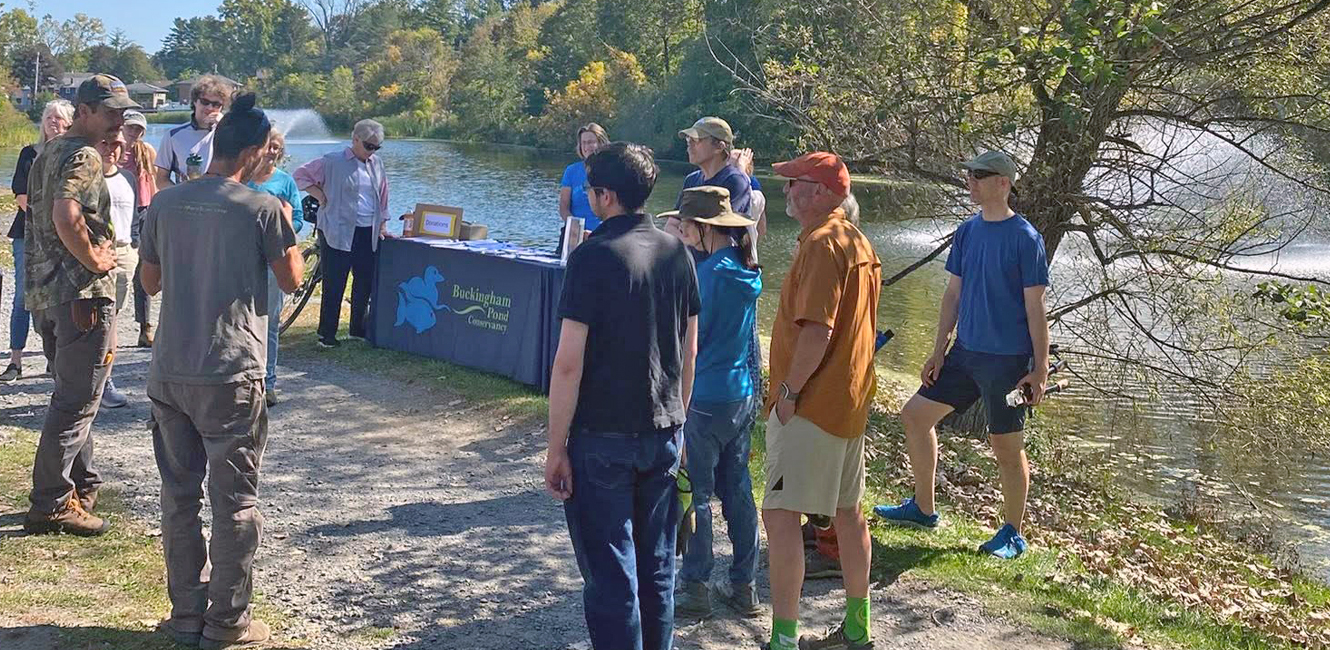For this year’s Fall Stewardship Day, we invited Andrew Lynn and Christian Grigoraskos of the More Trees Arborist Collective to help us recognize and control unwanted invasive plants that had taken root among the new plantings that More Trees helped us put in back in July. Andrew and Christian were pleased to see how well the new plants were doing – a testament to the hard work that BPC volunteers did to water them in.
Andrew and Christian started by describing some of the plants we want to control and giving us pointers on how to control them without using herbicides. For example, wild grape vines are problematic because they can grow over and shade out other plants, including even fairly large trees. The best way to deal with wild grape vines is to pull them out. Our other problematic vine, oriental bittersweet, constricts around the plants it climbs on and can actually girdle the plants. It’s best to pull bittersweet when it’s young. When bittersweet vines are older and harder to pull, stripping their leaves will prevent them from photosynthesizing and growing stronger roots. Repeated stripping will eventually weaken bittersweet and kill it. For thistles, it’s best to wear gloves and grab as close to the base of the shoot as possible, because there are fewer prickles there.
We did a lot of digging, pulling, clipping and dropping, all towards ensuring the survival of our newly planted trees and shrubs and making our park a better, more inviting place for all. Thanks again to everyone who came and helped out!
The Participation of More Trees in our Fall Stewardship Day was part of the Buckingham Pond Conservancy’s partnership in an Albany County Municipal Park Improvement Initiative grant for shoreline stabilization and stewardship at Buckingham Lake Park, which was initiated by the BPC and awarded to the City of Albany. The BPC is hoping to continue such productive partnerships with the City and County.
Mark Schlessman
Board Member and Fall Stewardship Day Team Leader

